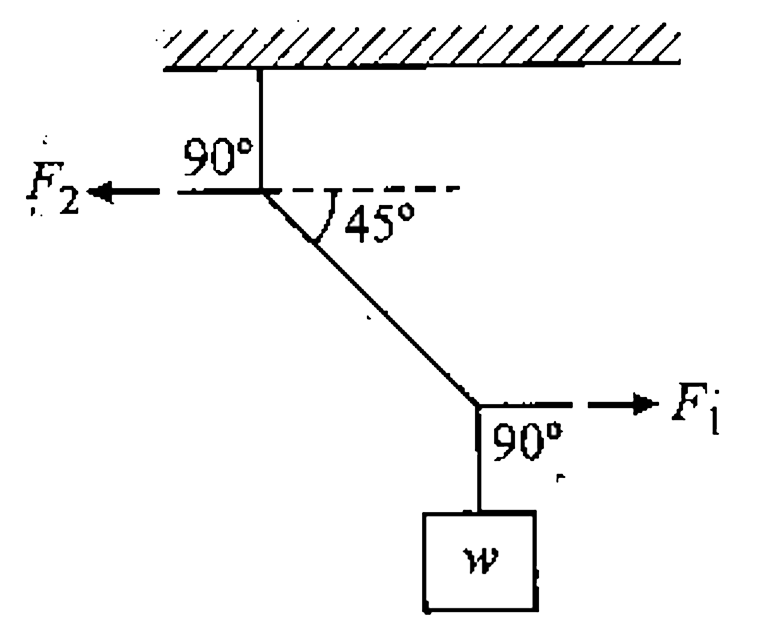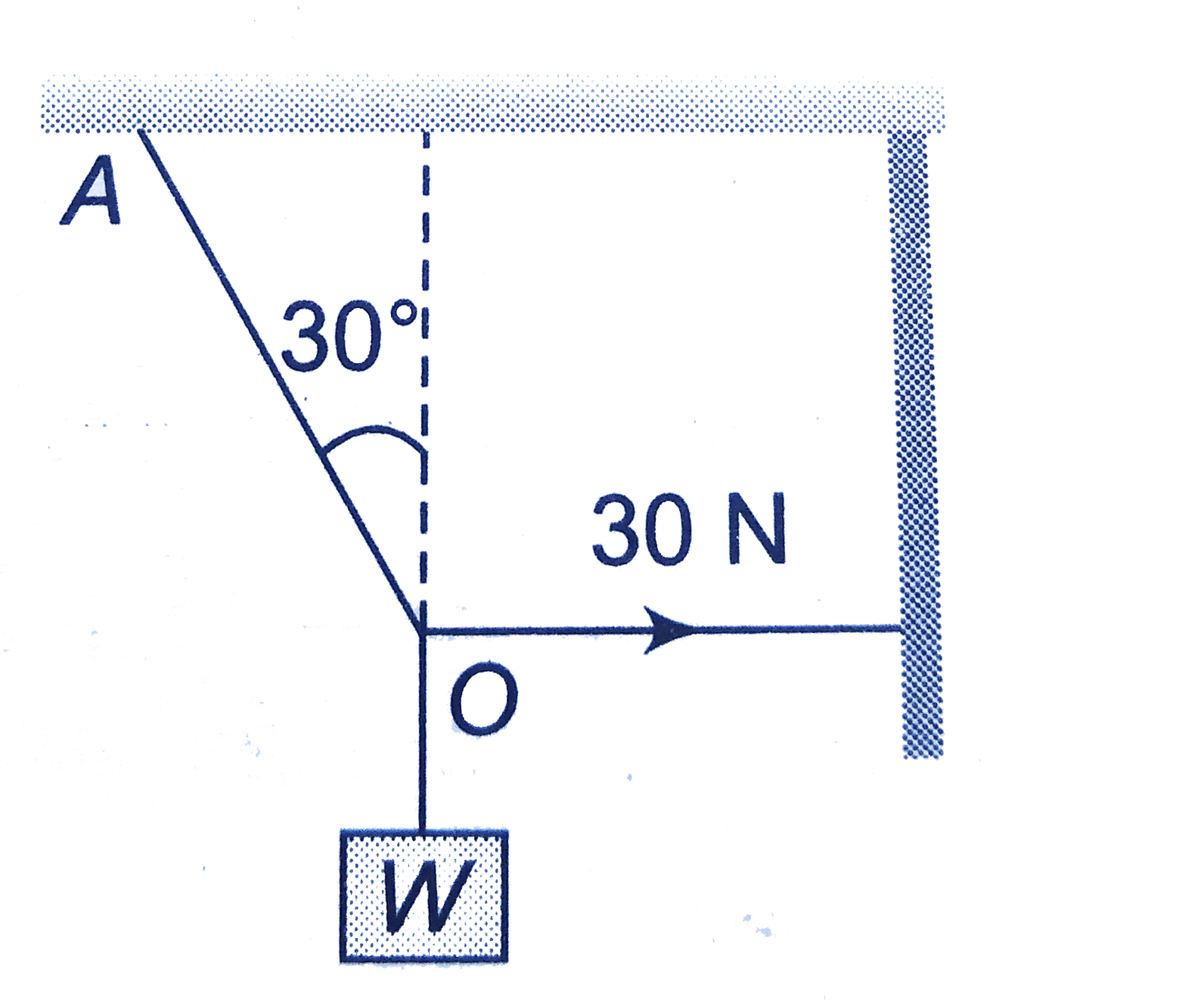In figure the tension in the diagram string is 60N
(a) Find the magnitude of the horizontal force F1 and F2 that must be applied to hold the system In the position shown.
(b) What is the weight of the suspended block?

(a) At P 
At P, F2=Tcos45∘=T√2 …(i)
w=Tcos45∘=T√2 …(ii)
At Q, F1=T√2 …(iii) From these three equations , we can see that
F1=F2=w=T√2=60√2=30√2N
Topper's Solved these Questions
- LAWS OF MOTIONBook:DC PANDEYChapter:LAWS OF MOTIONExercise:Objective Question
Explore 32 Videos
- LAWS OF MOTIONBook:DC PANDEYChapter:LAWS OF MOTIONExercise:Comprehension
Explore 9 Videos
- LAWS OF MOTIONBook:DC PANDEYChapter:LAWS OF MOTIONExercise:Exercise 8.5
Explore 2 Videos
- KINEMATICS 1Book:DC PANDEYChapter:KINEMATICS 1Exercise:INTEGER_TYPE
Explore 15 Videos
- LAWS OF THERMODYNAMICSBook:DC PANDEYChapter:LAWS OF THERMODYNAMICSExercise:Level 2 Subjective
Explore 18 Videos
Similar Questions
In figure-2.47 the tension in the diagonal string is 60 N. Find the magnitudes of the horizontal forces F1 and F2 the must be applied to hold the system in the position shown in figure-2.48. What is the weight of the suspended block.

[42.4 N each, 42.4 N]
View SolutionFind the magnitude of the horizontal force F required to keep the block of mass m stationary on the smooth inclined plane as shown in the figure.

View Solution
Knowledge Check
As shown in figure the tension in the horizontal cord is 30N. The weight W and tension in the string OA in Newton are
 A30√3,30B30√3,60C60√3,30DNone of these
A30√3,30B30√3,60C60√3,30DNone of theseIn the given diagram, with what force must the man pull the rope to hold the plank in position? Weight of the man is 60 kg. Neglect the weight of plank, rope and pulley.
 A150 NB300 NC600 ND120 N
A150 NB300 NC600 ND120 N
An object is in equilibrium under four concurrent forces in the direction shown in figure. Find the magnitudes of F1 and F2

View SolutionCalculate the force P required to cause the block of weight W2=200N just to slide under the block of weight W1=100N shown in figure-2.43. What is the tension in the string AB and the normal forces acting between the blocks and that applied by ground on W2? Surfaces of the blocks in contact are rough and the frictional force between the two blocks is 25 N and that between lower block and ground is 75 N Take g=10m/s2.

View SolutionA block of mass M is being pulled with the help of a string of mass m and length L. the horizontal force applied by the man on the string is F.

Determine
(a) Find the force exerted by the string on the block and acceleration of system.
(b) Find the tension at the mid point of the string.
(c ) Find the tension at a distance x from the end at which force is applied.
Assume that the block is kept on a frictionless horizontal surface and the mass is uniformly distributed in the string.
View SolutionTwo rectangular blocks A and B are placed on a horizontal surface at a very small separation. The masses of the blocks are mA=4 kg and mB=5 kg. Coefficient of friction between the horizontal surface and both the blocks is μ=0.4. Horizontal forces F1 and F2 are applied on the blocks as shown. Both the forces vary with time as F1=15+0.5t
F2=2t
Where ‘t’ is time in second.
Plot the variation of friction force acting on the two blocks (fAandfB) vs time till the motion starts. Take rightward direction to be positive for B and leftward direction to be positive forfA.

View SolutionTwo block A and B of equal mass are connected using a light inextensible string passing over two light smooth pulleys fixed to the blocks (see fig). The horizontal surface is smooth. Every segment of the string (that is not touching the pulley) is horizontal. When a horizontal force F1 is applied to A the magnitude of momentum of the system, comprising of A + B, changes at a rate R. When a horizontal force F2 is applied to B (F1 not applied) the magnitude of momentum of the system A + B once again changes at the rate R. Which force is larger −F1orF2 ?

View SolutionBlock B of mass m has been placed on block A of mass 3 m as shown. Block A rests on a smooth horizontal table. F1 is the maximum horizontal force that can be applied on the block A such that there is no slipping between the blocks. Similarly, F2 is the maximum horizontal force that can be applied on the block B so that the two blocks move together without slipping on each other. When F1andF2 both are applied together as shown in figure.

(a) Find the friction force acting between the blocks.
(b) Acceleration of the two blocks.
(c) If F2 is decreased a little, what will be direction of friction acting on B.
View Solution

